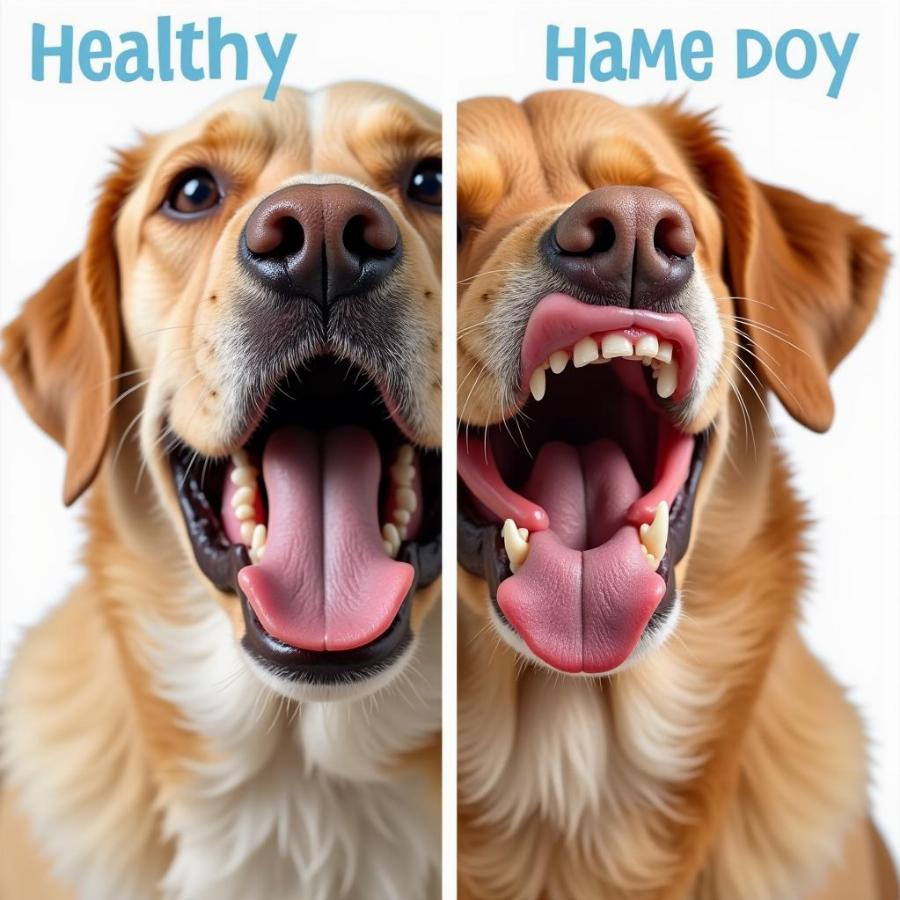A dog dental chart might sound like something only a veterinarian needs to worry about, but understanding the basics can be incredibly beneficial for any dog owner. Just like us, dogs need regular dental care to stay healthy and happy. Knowing what’s going on inside your furry friend’s mouth can help you identify potential problems early on and ensure they receive the best possible care.
This comprehensive guide dives deep into the world of dog dental charts, explaining everything you need to know to become a more informed and proactive owner when it comes to your canine companion’s pearly whites.
Decoding the Numbers and Letters: How to Read a Dog Dental Chart
At first glance, a dog dental chart can look like a jumble of numbers and letters. But don’t worry, it’s easier to understand than you might think! Just like humans, dogs have different types of teeth, each with a specific job to do:
- Incisors: These are the small teeth at the front of the mouth, used for nibbling and grooming.
- Canines: The long, pointed teeth located behind the incisors, designed for grabbing and tearing food.
- Premolars: The teeth behind the canines, used for crushing and grinding.
- Molars: The teeth at the very back of the mouth, also used for crushing and grinding.
Veterinarians use a standardized system to chart your dog’s teeth. The upper right side of the mouth is considered quadrant 100, the upper left is 200, the lower left is 300, and the lower right is 400. Each tooth within a quadrant is then assigned a specific number. For example, your dog’s upper right canine tooth would be 104.
Why Dog Dental Charts Matter: The Importance of Canine Oral Health
You might be wondering why dog dental charts are even necessary. The answer is simple: dental health is crucial for your dog’s overall well-being.
Just like in humans, plaque and tartar can build up on your dog’s teeth, leading to a range of dental problems, including:
- Gingivitis: Inflammation of the gums, often causing redness and swelling.
- Periodontitis: A more serious gum infection that can damage the gums and supporting bone.
- Tooth loss: Advanced dental disease can cause teeth to loosen and fall out.
 Common Dog Dental Problems
Common Dog Dental Problems
But the consequences of poor dental hygiene go beyond bad breath and toothaches. Dental disease can also increase your dog’s risk of developing serious health problems like heart, liver, and kidney disease.
“Regular dental checkups are just as important for dogs as they are for humans,” says Dr. Emily Carter, a veterinarian specializing in canine dentistry. “Early detection and treatment of dental problems can save your furry friend from pain, discomfort, and potential health complications down the road.”
Putting Your Knowledge into Practice: Using a Dog Dental Chart at Home
While you won’t be performing dental procedures on your dog at home (leave that to the professionals!), understanding dog dental charts can help you take a more proactive approach to their oral health.
Here are some ways you can use your knowledge of dog dental charts:
- Regularly examine your dog’s mouth: Look for any signs of redness, swelling, bleeding, or discharge.
- Familiarize yourself with the normal appearance of your dog’s teeth and gums: This will help you notice any changes more easily.
- Keep track of any missing or loose teeth: Note the location and inform your veterinarian.
Beyond the Basics: Additional Resources for Dog Dental Care
For more in-depth information about dog dental charts and canine oral health, be sure to check out these resources:
- Dental charts for dogs: Explore a variety of dental charts specifically designed for different dog breeds and ages.
- Dog canine dental chart full size printable: Download and print a full-size dog dental chart to use at home.
Conclusion
Understanding your dog’s dental chart is a crucial step towards becoming a responsible and informed pet owner. By familiarizing yourself with the basics of canine dental anatomy and common dental problems, you can play an active role in keeping your furry friend’s smile healthy and bright for years to come.
Remember, regular dental checkups with your veterinarian, along with consistent home care, are the cornerstones of good oral hygiene for your beloved companion.
Frequently Asked Questions About Dog Dental Charts
Q: How often should I brush my dog’s teeth?
A: Ideally, you should aim to brush your dog’s teeth daily.
Q: What type of toothbrush and toothpaste should I use?
A: Use a toothbrush and toothpaste specifically designed for dogs.
Q: Can I use human toothpaste on my dog?
A: No, human toothpaste can be toxic to dogs.
Q: My dog hates having his teeth brushed. What can I do?
A: Start slowly and gradually get your dog used to the process. Use positive reinforcement, such as treats and praise.
Q: What are some signs of dental problems in dogs?
A: Bad breath, drooling, difficulty eating, pawing at the mouth, and red or swollen gums.
Do you have other questions about your dog’s health and well-being? Check out our other informative articles on Beaut Dogs!
For personalized advice and support regarding your dog’s dental health, don’t hesitate to contact us at [email protected].
Beaut Dogs is your one-stop resource for all things dog-related. From breed information and care guides to product recommendations and expert advice, we’re here to help you navigate the wonderful world of dog ownership. Visit us today at https://beautdogs.com and discover a wealth of valuable information to enhance your bond with your canine companion.